- News
- Reviews
- Bikes
- Components
- Bar tape & grips
- Bottom brackets
- Brake & gear cables
- Brake & STI levers
- Brake pads & spares
- Brakes
- Cassettes & freewheels
- Chains
- Chainsets & chainrings
- Derailleurs - front
- Derailleurs - rear
- Forks
- Gear levers & shifters
- Groupsets
- Handlebars & extensions
- Headsets
- Hubs
- Inner tubes
- Pedals
- Quick releases & skewers
- Saddles
- Seatposts
- Stems
- Wheels
- Tyres
- Tubeless valves
- Accessories
- Accessories - misc
- Computer mounts
- Bags
- Bar ends
- Bike bags & cases
- Bottle cages
- Bottles
- Cameras
- Car racks
- Child seats
- Computers
- Glasses
- GPS units
- Helmets
- Lights - front
- Lights - rear
- Lights - sets
- Locks
- Mirrors
- Mudguards
- Racks
- Pumps & CO2 inflators
- Puncture kits
- Reflectives
- Smart watches
- Stands and racks
- Trailers
- Clothing
- Health, fitness and nutrition
- Tools and workshop
- Miscellaneous
- Buyers Guides
- Features
- Forum
- Recommends
- Podcast
feature
Future Tour de France Tech: Can Ekoi's radical PW8 system revolutionise bike pedals for the first time in 40 years?
While modern Tour de France bikes barely resemble those from a few decades ago, in the last 40 years road bike pedals have seen hardly any changes. That is until now, with the new Ekoi PW8 shoe/pedal system getting some interest from top teams such as Ineos Grenadiers and UAE Team Emirates. So, is this the future of pedal tech, and will we all be switching in the coming years? We've been riding a pair and speaking to the engineers behind the pedals to find out...
> 8 bygone bike technologies we're now well rid of
Back in 1984 Look released the first clipless cycling pedal or "pédales automatiques" - technology that after a slow uptake would eventually replace the decade-old clipped pedals.
Since then the pedals used in the upper echelons of cycling such as at races like the Tour de France have changed very little; in fact, in a recent feature where we compared a modern superbike to one from the turn of the century we were surprised to find that the SPD-SL cleats were compatible across both bikes. Every other 'standard' seems to change every few years!
Fast forward to the here and now and there's a new pedal system rearing its head. It's called PW8, and just like Look's revolutionary clipless pedals it aims to transform not just what the pros ride, but amateurs' pedalling too.
> Where cycling products go to die: bright bike tech that failed to catch on
We first reported on the Ekoi PW8 pedals back in January along with their lofty claims, claims that certainly sparked our interest. To find out more, we hot-footed it over to France to give the new pedals a ride and speak to the engineers behind the pedals to answer the burning question: are we at another pedal turning point?
What is the PW8 system?
According to Ekoi, the PW8 pedals get their name from the figure-of-eight shape of the pedal body rather than the eight-watt performance gain that had previously been touted (more on that in a minute).
Put the PW8 pedals next to a set of Shimano SPD-SL or Look pedals, and it's clear that there's quite a difference. The PW8 pedal is much, much bigger.
Raphaël Dalle, who heads up Ekoi's pedal and shoe design, says that the system has been designed for performance and sees three key advantages:
1. It's super lightweight
There's no official weight yet, as we saw pre-production samples; but the titanium axles version certainly was noticeably (in the hand) lighter than a Dura-Ace R9100 pedal. Dalle claims that the PW8 system is "much lighter than any other system when you combine the overall" and explained that on an average Grand Tour stage a pro makes around 30,000 pedal revolutions, and pushing less weight is more efficient.
2. Low stack height
The PW8 pedals put you close to the pedal axle to the tune of 8mm. This is something that we've seen other manufacturers working towards; for example, Wahoo note this as a positive of their Speedplay pedals, and the lower stack height is seen as an advantage of Shimano's Dura-Ace pedals compared to Ultegra. Dalle explained that this is "good for aerodynamics", which he says will soon be proved by tests: "Being close to the axis makes your pedal motion much more efficient and fluid", he adds.
3. Larger contact surface
Dalle next explained that there is a larger contact area between the surface of the pedal and the shoe: "This has two interests: power transfer and also the feeling of stability", says Dalle.
One potential downside of the new system, especially for amateur athletes, is that the PW8 pedals won't work with current road shoes which often have a three-bolt cleat design. According to Ekoi that hasn’t stopped the PW8s from sparking interest from top pro teams such as Ineos Grenadiers and UAE Team Emirates.
Although Ekoi has been the driving force behind the PW8 system, the brand says it doesn't want the system to be exclusive to Ekoi shoes, and hopes that in the future other shoe manufacturers will adopt it once they see the advantages.
Is PW8 just for pros?
I was keen to find out if the PW8 system is just another one of those innovations that is offered to the public as a box-ticking exercise to allow pros to race using them. According to Ekoi, nope. They see the pedal system as being just as advantageous for amateurs as it is for pros.
With that in mind, the cleats will be offered in four float options: fixed, 1.5, 3 or 6 degrees, and efforts have been made to make the cleat set-up process as simple as possible.
Cleat set-up isn't high up many rider's list of favourite tasks, but Ekoi says the PW8 system will take some of the complexity out.
> How to get your shoe cleats set up right
The fore/aft position can be set independently of the port/starboard positioning, meaning that you can work on one axis at a time.
The PW8 system also has advantages off the bike, which will likely appeal to amateur riders. On the Ekoi shoes, the cleat is recessed below the tread of the shoe making them easier to walk in than a road shoe with a traditional cleat. Ekoi sees this as a big advantage, not just for road riders but also on gravel and for touring. Julien Abselon, multiple mtb world champ, has recently been testing the shoes on an ultra-endurance ride from Paris to Greece.
An 8-watt saving?
When we first wrote about the PW8 system, a surprisingly large 8-watt power saving was touted. We were keen to dive a bit deeper behind if these claims, and how the figures came about...
"We have seen [in] 100%, of the tests we've made, a benefit", Ekoi says.
"It's not that when you [fit] this, every single rider will save eight watts. It can depend on the rider. But yes, each time we have made some tests, statistically it is more efficient."
Not everyone will be saving 8 watts then, but Ekoi are confident that most, if not all, riders will find a benefit. More tests are currently being conducted before an official figure is released.
> 6 of the best value bike upgrades
Since retiring from the pro peloton, Phillippe Gilbert has been working with Ekoi to develop the new system. He told us that "personally, the biggest advantage was on the flats."
"Today's riders are always calculating their CdA, this is what counts, especially in TTs but also on the road". "The PW8 system "will reduce your CdA because you will get more compact because the combination of the pedal and the shoe has a lower stack height so you have to adapt your saddle [height]."
Gilbert explained that the low stack height of 8mm, (Dura-Ace pedals and Look Keo blade pedals have a stack height of 14.6 and 14.8mm respectively) means that riders can get lower.
"This is maybe 6 months of work, or more, or maybe you will never get there with stretching", he adds.
"If you give the riders the possibility to get smaller they will always take it."
Our ride impressions
While at Ekoi's HQ, I was able to sneak out for a ride on the new pedal system. We hope to do a full review when the PW8s officially launch.
I was initially a little sceptical of how easy these would be to clip in and out of. As a journalist, you really don't want to deck it on a borrowed bike if you can't unclip!
It didn't take long to be at ease using the PW8s, though. They clip in and out just like my regular Shimano pedals, and in fact, the whole riding experience felt very familiar.
> SPD-SL v SPD — which clipless pedal option is right for you?
The design of the pedals might be quite a bit different to the current offerings on the market, but they don't feel peculiar to use. The weight still goes through the same part of your foot as you push down, and there wasn't any pressure points. I did note the width of the pedal under my foot, it does feel very stable and whereas usually even in 0-degree cleats and shoes with stiff carbon soles you can rock your foot from side to side, this was reduced with the PW8s.
The shoes were also very easy to walk in, with a set of metal stairs posing no problems. With a carbon sole, it was by no means like walking in trainers, but rather more like walking in an XC MTB shoe where the cleat is also recessed.
As for the pedalling efficiency and aero gains; I can't say that I felt any noticeable benefit, but neither would I expect to. I was on an unfamiliar bike on unfamiliar roads, and so I have no reference point to compare against.
Would I switch? I certainly can't see any reason not to. They felt good on the climbs, sprint efforts and steady-state efforts, and potentially have performance gains. I'm looking forward to seeing more data, and there's potentially a weight saving to be had as well. We'll wait and see what price tag the PW8s come with!
Revolutionary?
> 10 tech trends to copy off the Tour de France pros
At the start of this article, I asked the question of whether these would become commonplace. Having used the pedals and spoken to the brains behind them, I think they might be!
Pedal manufacturers have long touted the benefits of a lower stack height, greater surface area and lower weight, all of which the PW8 claims to improve upon. Then there's the potential aero benefit, as well as the walkability.
The biggest problem I see the PW8s facing is compatibility. For it to succeed, other shoe brands need to get on board, and for the pros to use them there likely needs to be at least one team sign up rather than just individuals, otherwise the neutral service bikes won't also be equipped.
> Review: Classified Powershift Kit & Wheelset
In many ways, I can draw parallels between the PW8 system and the Classified system, an innovation that won our component of the year award in 2023. It's got lots of positives, but to be a success it relies on other brands adopting the technology. In the cycling world where change is slow, that's easier said than done.
The PW8 pedals aren't for sale yet, but are in the final testing phase. Ekoi says we could see them hit the market as soon as the end of the year.
Let us know if you think the PW8 pedal system is the future in the comments below and look out for our brand insider video looking at more Ekoi innovations coming soon...
Jamie has been riding bikes since a tender age but really caught the bug for racing and reviewing whilst studying towards a master's in Mechanical engineering at Swansea University. Having graduated, he decided he really quite liked working with bikes and is now a full-time addition to the road.cc team. When not writing about tech news or working on the Youtube channel, you can still find him racing local crits trying to cling on to his cat 2 licence...and missing every break going...
Latest Comments
- quiff 2 min 51 sec ago
The intent is interesting - you might argue that the intent is deterrent and you never intend anyone to actually come into contact with the gas - a...
- Secret_squirrel 3 min 36 sec ago
Goalpost 1...
- quiff 19 min 16 sec ago
Only £350 a month? I wonder why? (Great car I'm sure, but I hate the recent BMW grille design)
- howyaBen 20 min 17 sec ago
I like the measure of effectiveness of the new Hutch tires, % of wattage improvement. Instead of saying, "28.6 watts at 49.34 km per mile a nano...
- David9694 20 min 35 sec ago
Random driver account: "cyclists should be made to wear hi viz like workers do on a building site"....
- dubwise 31 min 19 sec ago
Nice to see Police Scotland clamping down on road traffic offenders https://archive.is/BUiil Oh wait, they just go after the vulnerable road users.
- quiff 32 min 55 sec ago
"The algorithm" served me an older JV video last week which I now can't get out of my head....
- OnYerBike 1 hour 36 min ago
Is that normal for that spot? Pretty sure sand (and/or other sand-like substances) is commonly used to soak up spilled diesel, so if a load of sand...
- quiff 2 hours 50 min ago
Holy thread resurrection Batman!
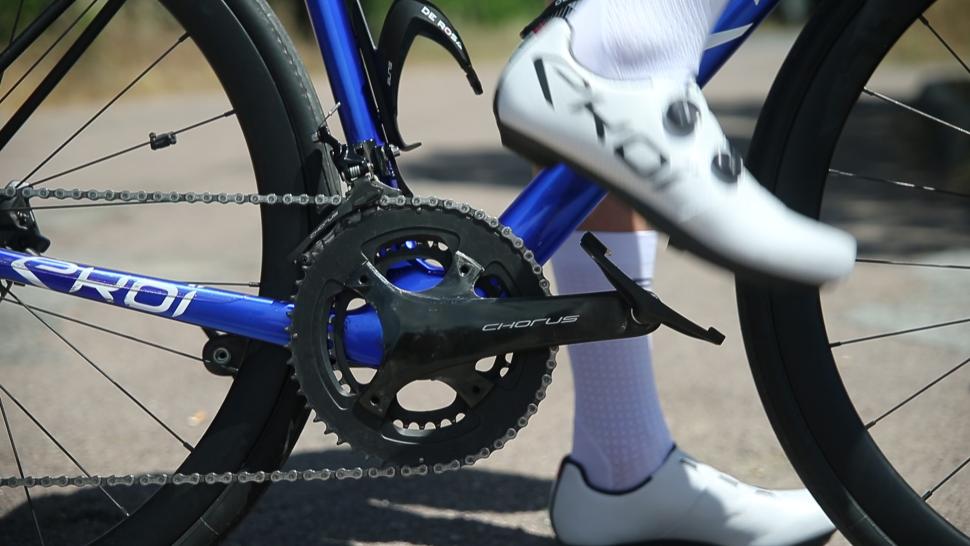

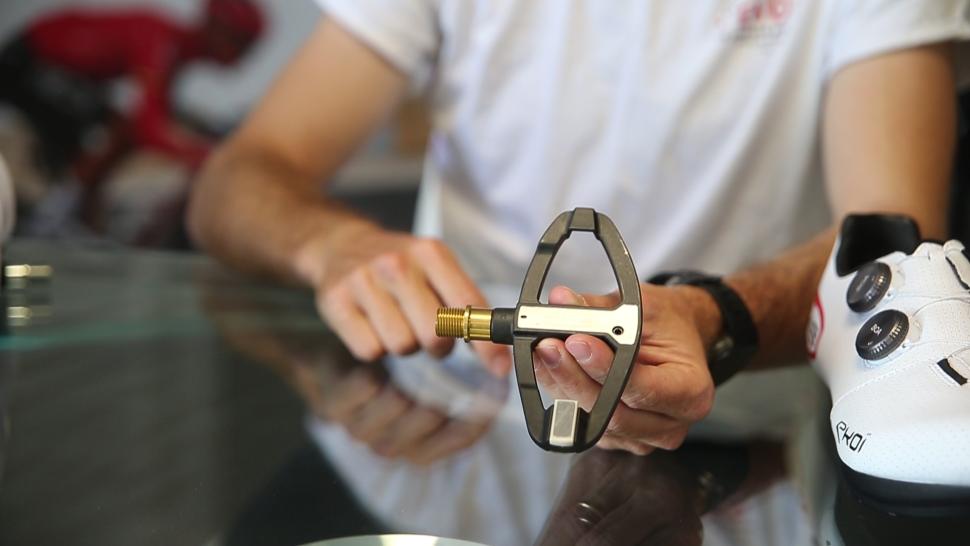
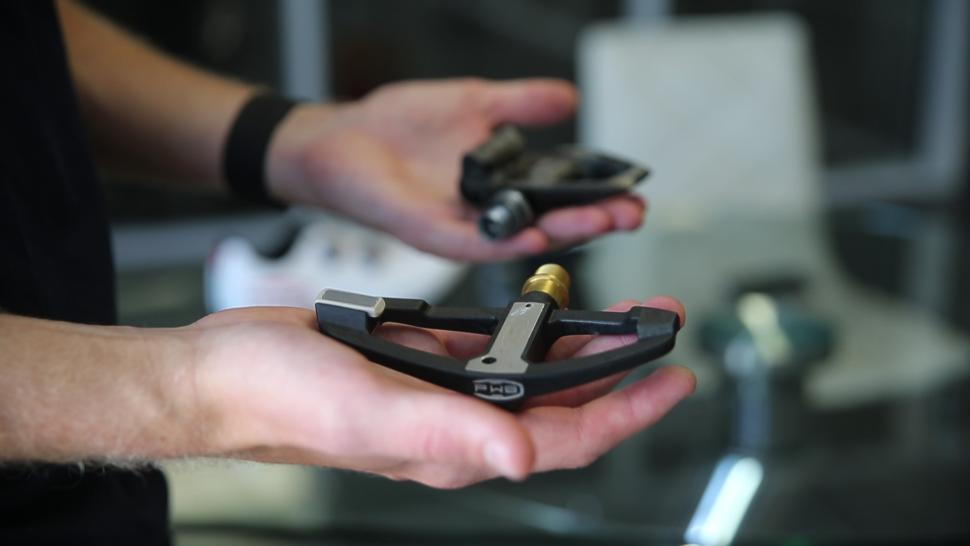

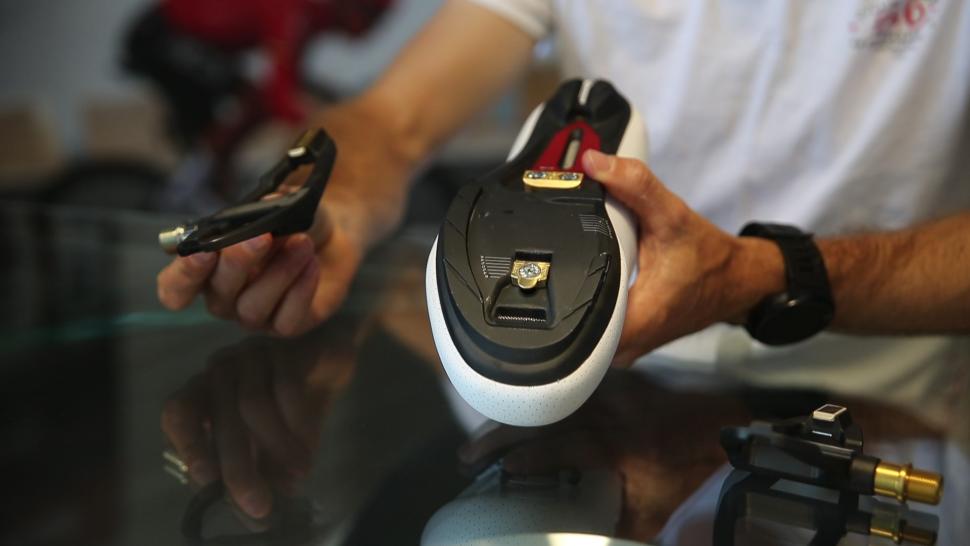
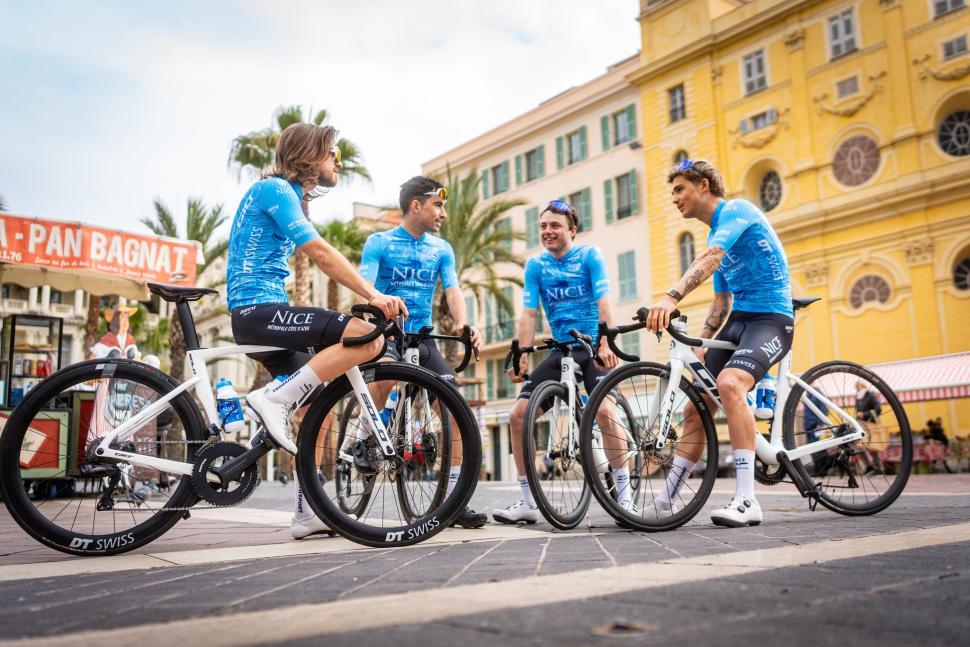

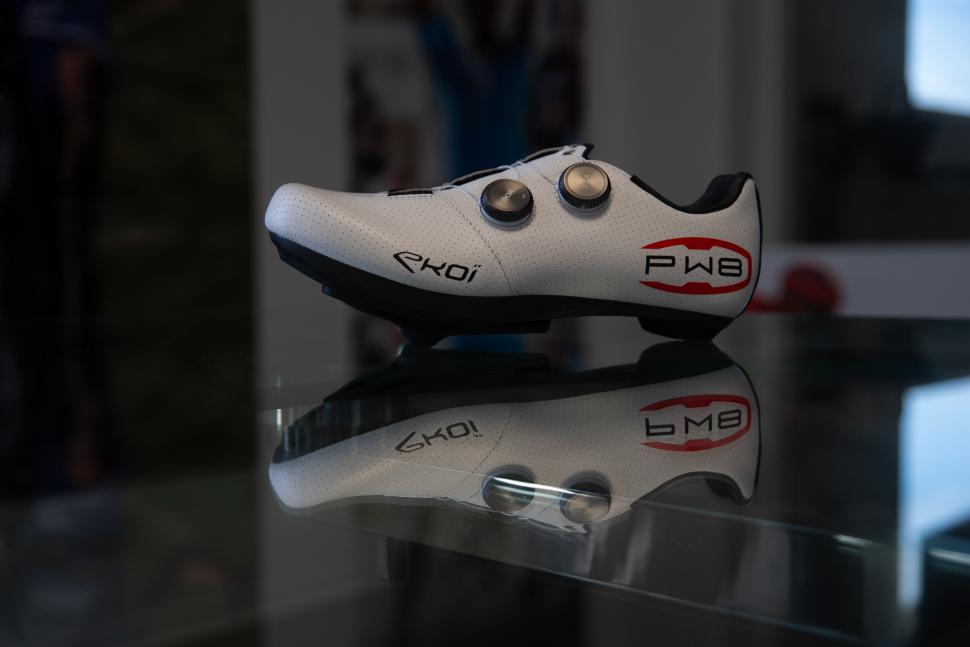
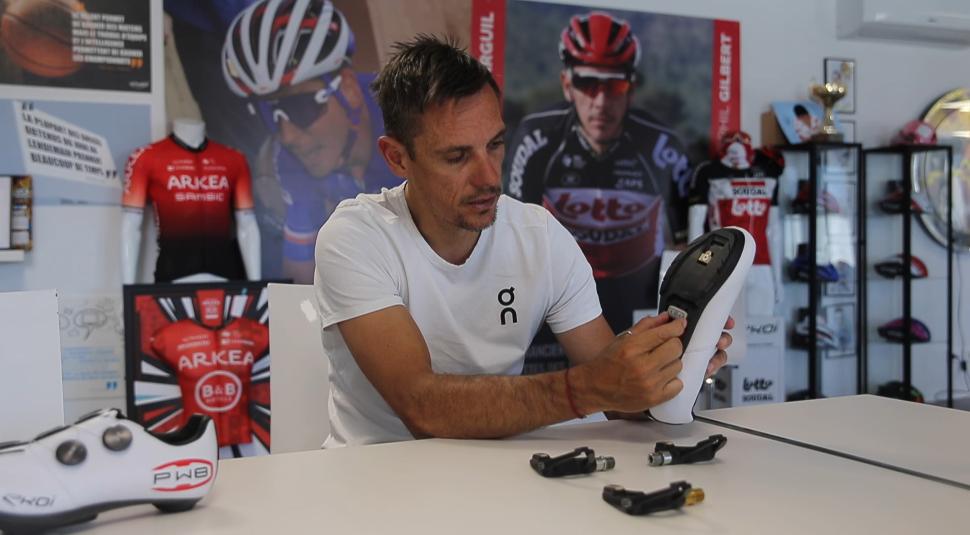
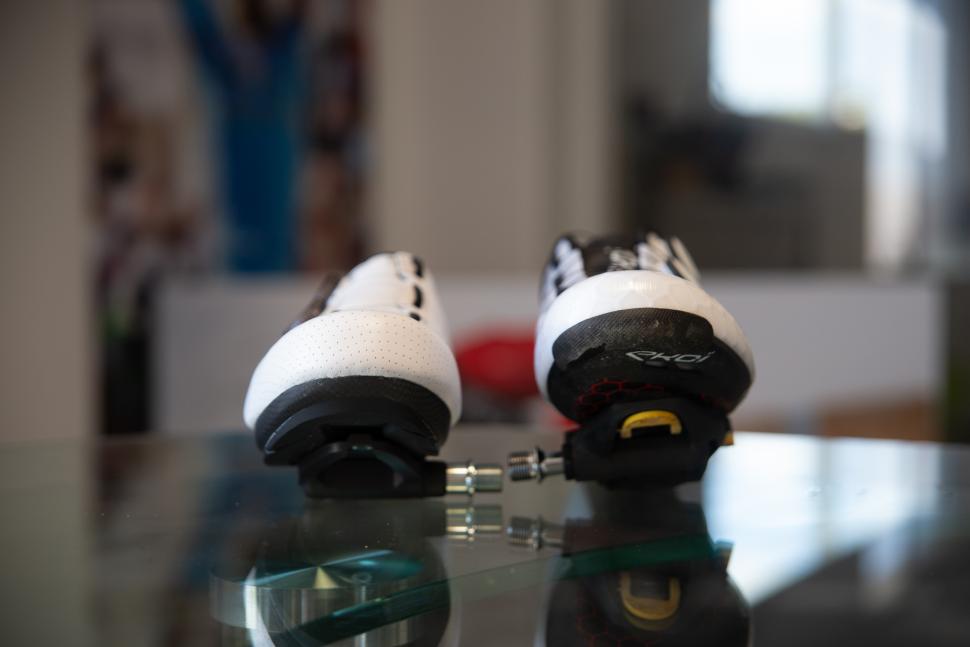

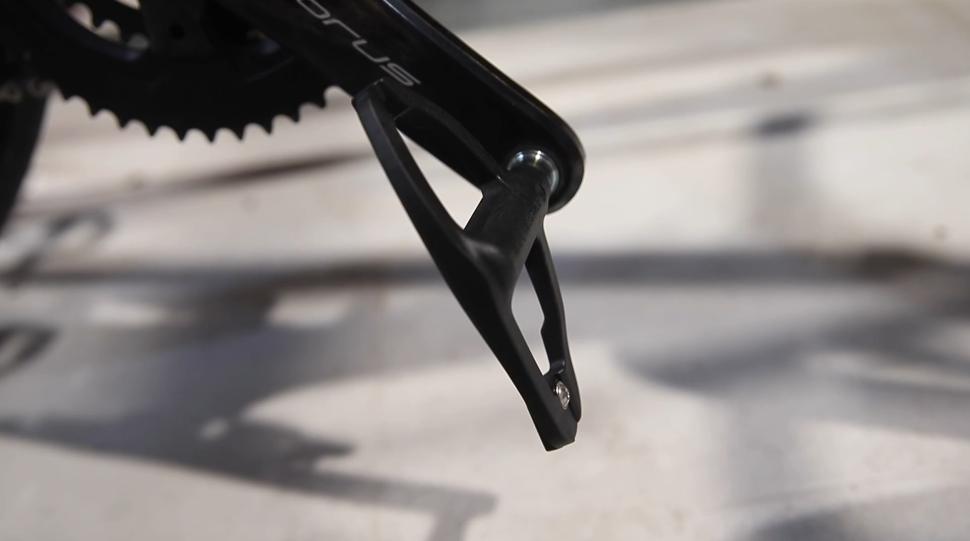
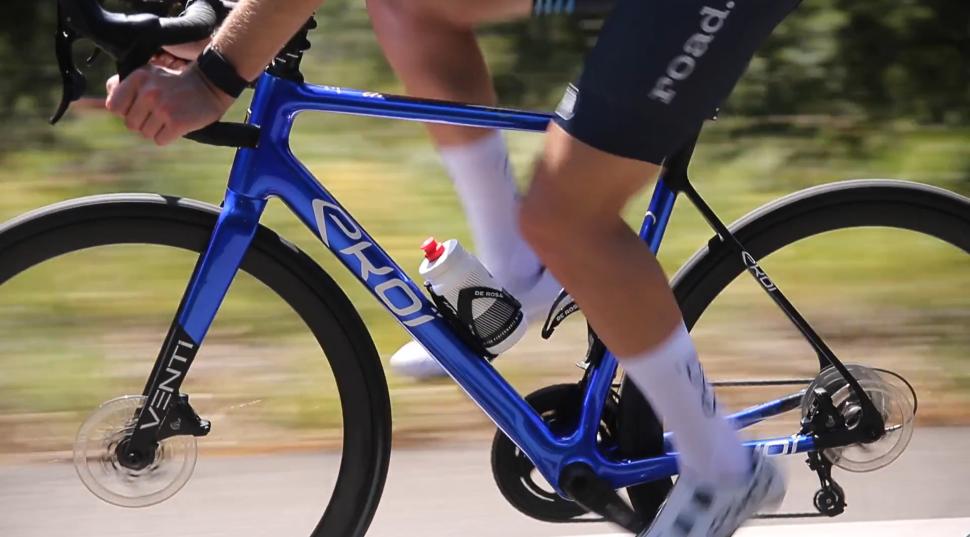
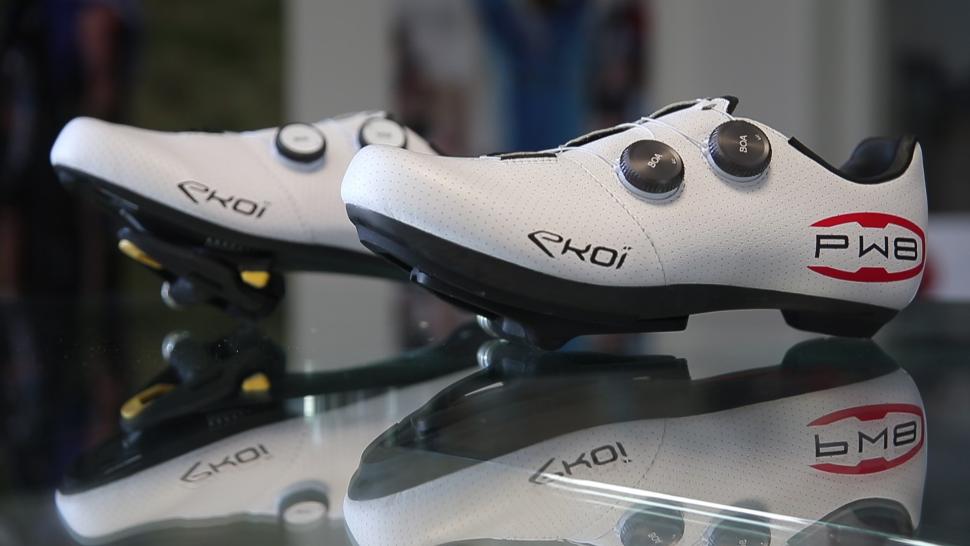
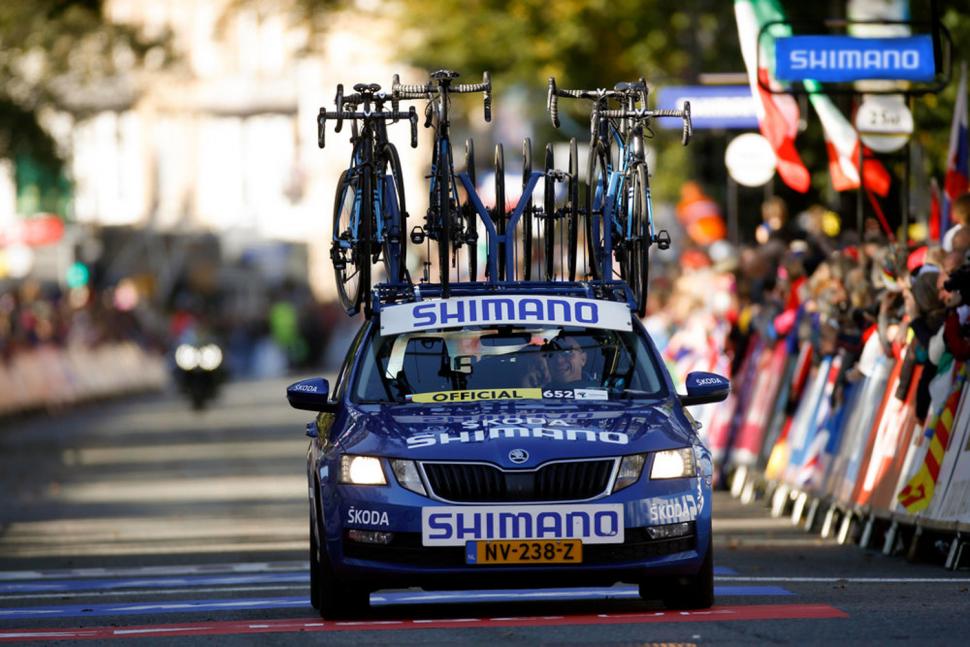
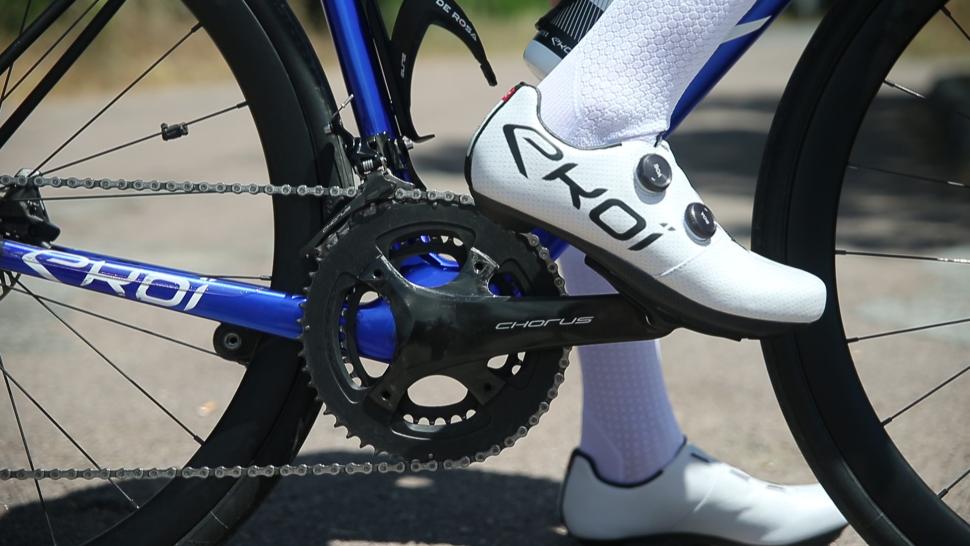
Add new comment
9 comments
If Time was able to reduce the cleat height they'd be about to compete with PW8 on that level, other than that I don't give this system much for development and hassle by more than the well established pedal systems..cost is a massive area theyd have to come to market on with very low prices to get popular imo
It would take a heck of a lot to drag me away from my Time pedals with their near zero effort engagement. Being forced to buy new shoes because they aren't 3-point fixing isn't going to do that.
I think they're doing it wrong (and the photos suggest so too).
The Bike is a repainted De Rosa 838, isn't it? And quite nice to see Campy on it
Looks good. I always liked a low stack. I'm now reminiscing about my Dura Ace AX pedals: those AX Dyna Drive pedals had the lowest stack height of all time.
That short spindle certainly seems like an obvious solution if a minimal stack height (even zero stack) is desired. So obvious that I presume there are other issues (loading on the bearings ?) to overcome to achieve it
They speak a lot about comparisons to Dura Ace SPD-SL and Look KEO for weight and stack height. Yet totally ignore the best pedal system already on the market - Speedplay.
Crankbrothers disagree....
It's mentioned in benefit #2 in the article...